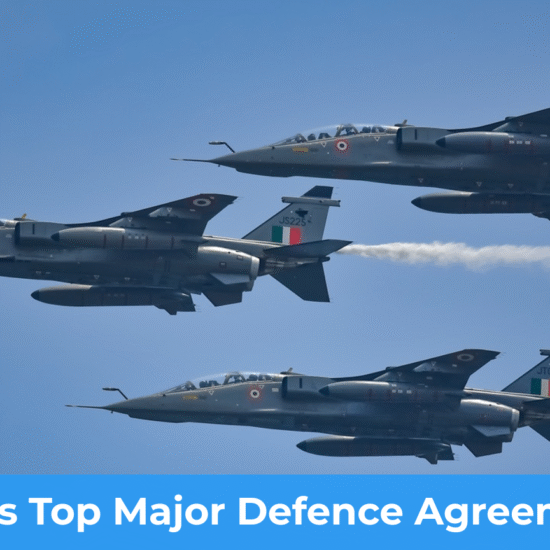S-400 Missile System: India’s Sudarshan Chakra Against Aerial Threats
Why in News?

Following the precision strikes carried out by India under Operation Sindoor on May 7, 2025, the threat of retaliation from Pakistan brought the spotlight back to India’s air defence preparedness. Among the most crucial components of India’s defence infrastructure is the S-400 Triumf system, referred to in Indian service as Sudarshan Chakra, a name derived from Hindu mythology, symbolizing divine precision and invincibility.
What is the S-400 Sudarshan Chakra?
The S-400 Triumf is a next-generation, long-range surface-to-air missile (SAM) system developed by Russia’s Almaz Central Design Bureau. India procured it to enhance its multi-layered air defence capabilities, offering protection against a range of modern threats including:
- Stealth aircraft
- Cruise and ballistic missiles
- UAVs and drones
- Precision-guided munitions
In Indian military parlance, it’s nicknamed Sudarshan Chakra, drawing parallels to the mythical spinning weapon of Lord Vishnu, known for striking down evil with unparalleled precision.
Key Features and Capabilities
Detection and Tracking
- 360° radar coverage with radars like the 96L6E
- Tracks up to 300 targets simultaneously, engaging up to 36 threats
- Capable of detecting stealth and low observable targets
- Effective in electronic warfare (EW) environments
- Detects high-altitude targets at 30 km altitude, including ballistic missiles
Missile Arsenal
| Missile Type | Effective Range |
|---|---|
| Very Long Range (40N6) | Up to 400 km |
| Long Range (48N6) | Up to 250 km |
| Medium Range | Up to 120 km |
| Short Range | Up to 40 km |
- Versatile targeting: Engages slow-moving UAVs and fast fighter jets
- Multiple guidance modes: Inertial, active, passive, and satellite
Mobility and Deployment
- Entire system is mounted on wheeled vehicles, ensuring high mobility
- 5–10-minute setup time allows rapid deployment
- Employs “shoot and scoot” tactics for survivability in hostile zones
Flexibility and Adaptability
- Can function in point defence (e.g., military bases) or area denial roles
- Intercepts threats from low-altitude cruise missiles to exo-atmospheric ballistic missiles
- Software-defined adaptability to counter emerging threats
Networking and Integration
- Integrates with India’s existing air defence network
- Coordinates with systems like S-300, Pantsir, and Tor
- Features resistance to jamming and multi-radar redundancy
🇮🇳 India’s S-400 Acquisition: Deal and Deployment
- Deal Signed: In 2018, India signed a ₹35,000 crore (~$5.4 billion) agreement with Russia to procure five squadrons
- Deliveries and Status:
- 3 squadrons operational as of 2025
- Remaining 2 squadrons to be delivered by 2026
Deployed Locations
- Western Front (Jammu & Kashmir, Punjab – via Pathankot)
- Southwestern Sector (Rajasthan and Gujarat)
- Future deployments expected along the northern border with China
Global Operators of the S-400
| Country | Status |
|---|---|
| Russia | Developer and primary operator |
| China | First foreign buyer, received full delivery |
| Turkey | Acquired in 2017, caused NATO tensions |
| Belarus | Operates under Russian cooperation |
| Algeria | Believed to have operational units (unconfirmed) |
| India | 3 squadrons operational, 2 more by 2026 |
Why is the S-400 Important for India?
- Provides strategic deterrence in the face of two-front threats (Pakistan and China)
- Acts as a shield for critical infrastructure and urban centres
- Plays a key role in India’s layered air defence network
- Enhances survivability and early interception capabilities during aerial threats
Conclusion
The S-400 Sudarshan Chakra has emerged as a cornerstone of India’s air defence strategy. With unmatched range, mobility, and integration capabilities, it acts as both a deterrent and a defence mechanism against modern aerial warfare. In the current climate of heightened geopolitical tension, systems like the S-400 not only safeguard strategic assets but also enhance India’s posture as a militarily prepared nation.



